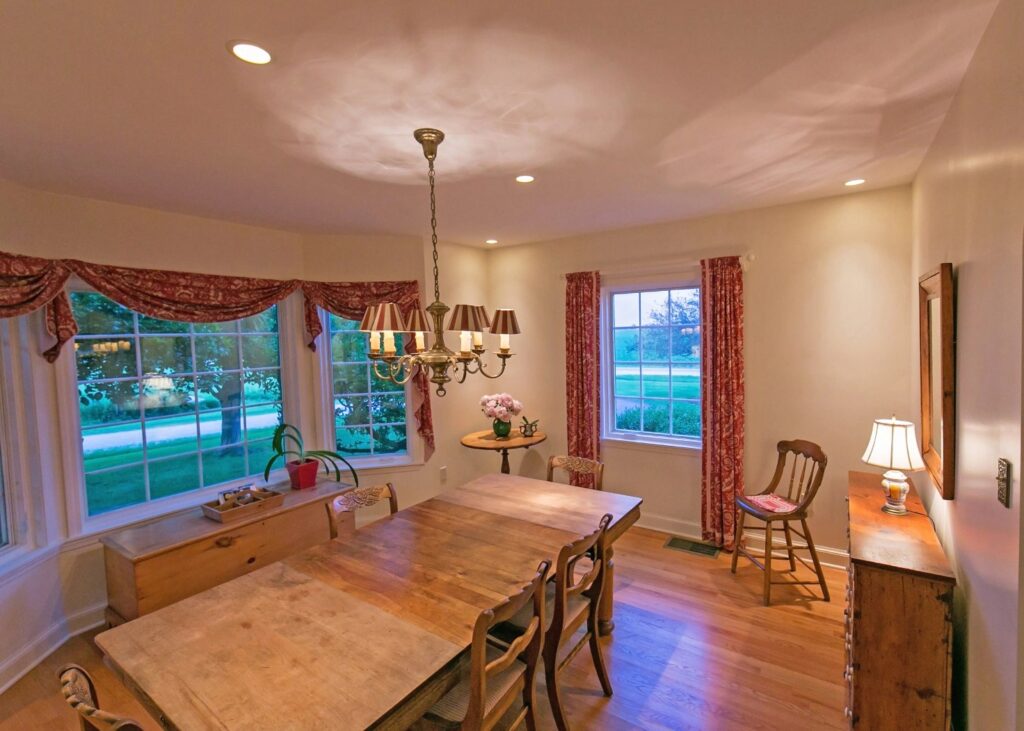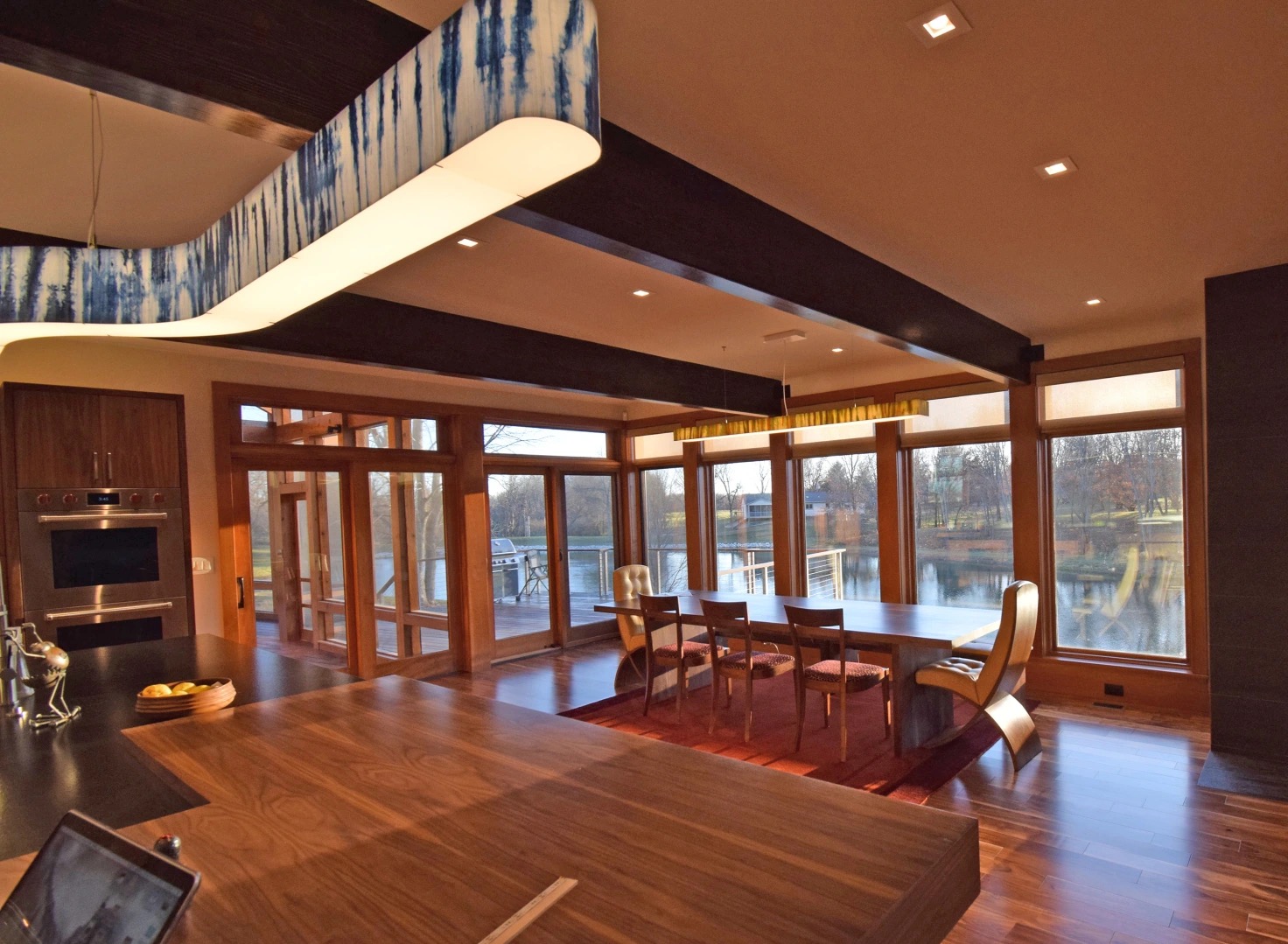Most dining areas, whether small traditional rooms or large contemporary spaces, have one thing in common: a table. It is easy, therefore, to begin lighting the dining room with light above the table that provides light for doing,but stopping there would leave the room unfinished. If we do not address light for knowing, the dining room will not feel comfortable and inviting.
Can the central feature of most dining rooms- the chandelier- provide more than just light for doing? The answer is yes- if careful consideration is given to the fixture. But even the best chandeliers can leave the perimeter of a dining room dark and shadowed- you need more layers of light for knowing where you are.
I grew up on a farm in central Illinois with three sisters and a brother. When we all grew up and moved away, my mother began a decade of transformation, turning the house into something that did not look like a well-used gymnasium. One space transformed was the dining room.
When she got around to her intense renovation, which included a complete tear-out of the existing large eat-in kitchen, she decided to swap the dining and kitchen locations, add a wall, and return to a more traditional farmhouse dining room. It would be simple in style and modest in size, more comfortable for my parents and the occasional guest now that seating seven or more was a rare occurrence.

My mother knows what she likes, and she had already found a dining room chandelier for over the table- it was a light that made her feel good, but it did not provide enough light for the room. When the leaves were added and the table extended for larger family gatherings, any light from the chandelier would disappear completely at the ends of the table. The simple addition of two dimmable recessed downlights inexpensively pushed light for doing onto the table while minimizing glare and allowed us to dim the chandelier to soft levels that made us feel good.
The chandelier provided a small amount of light for knowing- especially on the ceiling above and a small amount on the faces of family and guests. But if we had stopped there, the rest of the room would have fallen into darkness and left us disconnected from our surroundings. That’s where light for knowing comes in handy.

When daylight is present, light for knowing is provided by the large windows in the room. We also get coveted views, which makes the room feel spacious and connected to the property. At night, however, the windows become black mirrors and light for knowing where we are is in short supply.
We briefly considered placing downlights centered on each window, as my mother had read in a magazine that it was a lighting designer’s secret trick. This makes sense, if you use light-colored shades or drapes over your windows at night. If you leave your windows uncovered- as my parents do- then much of the light from such a downlight will be wasted on a small part of the yard and the floor. We opted instead to place four downlights in the corners of the room, which are typically in shadow. I find that if I know the edges of a space or building- like corners- then I know where I am and the shape of the room. It was this layer of light for knowing that really elevated the room’s lighting.
See more dining room examples in my article on Houzz.com
